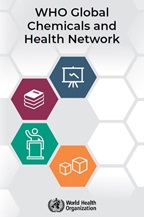The WHO Chemicals Road Map
The Seventieth World Health Assembly approved the Road map to enhance health sector engagement in the Strategic Approach to International Chemicals Management (SAICM) towards the 2020 goal and beyond. The WHO Secretariat has developed a workbook that offers a structured way to assist Member States to work through the road map, choose priorities and plan activities.
One of the actions in the Chemicals road map mandates the Secretariat to establish a global chemicals and health network, with links to existing subregional, regional and international networks, to facilitate health sector implementation of the road map. Over 70 Member States have joined the WHO Global Chemicals and Health Network and the inaugural meeting of the Network was held in November 2018.
SAICM is a policy framework to guide efforts to achieve the Johannesburg Plan of Implementation goal that by 2020, chemicals will be produced and used in ways that minimize significant adverse impacts on human health and the environment. As the leading international authority on health issues, including the human-health aspects of the sound management of chemicals, WHO plays an important role in SAICM and the implementation of SAICM as well as the Inter-Organization Programme for the Sound Management of Chemicals.
Highlights

Online self-training course on the WHO Chemicals Road Map
Publications
All →
Chemicals Road Map
In May 2017, the Seventieth World Health Assembly (WHA) approved the Road map to enhance health sector engagement in the Strategic Approach to International...
Chemicals road map workbook
Following approval by the 70th World Health Assembly of the WHO Chemicals Road Map, the WHO Secretariat developed a workbook that offers a...
Case studies on the implementation of the Chemicals Road Map
All →Case study: successful collaborative multi-agency approach to deliver on the WHO chemicals road map in...
New Zealand has comprehensive legislation and functional arrangements to manage chemical risks and respond to chemical events. Responding sectors include...
The research project “Environmental justice in urban areas” enables municipalities to develop strategies for protecting the health of citizens...

